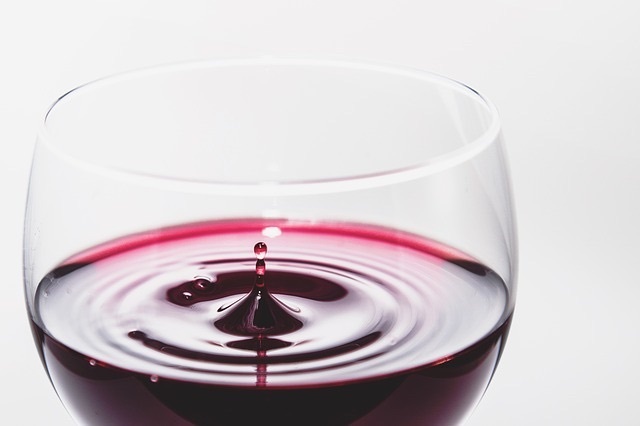
Any fine wine is complex, so it’s no surprise that the winemaking industry uses a diverse range of descriptors for the various reactions and techniques that affect wines as they make their way from the vineyard to the bottle.
Oxidation is one of those descriptors, and it refers to the way in which oxygen interacts with the grapes, juice, and bottled wine.
From Oxidation to Oxidized Wine
While oxidation is a natural part of winemaking during field harvesting – and to a small degree during processing, aging and bottling – it can easily get out of hand and lead to spoiled wine. Winemakers typically limit oxygen exposure to prevent negative effects.
When grapes and their juice encounter oxygen, their aroma profile changes. Minor exposure to oxygen can lead to deeper, more complex flavors that add appeal and overall quality to wines. But too much exposure has the opposite effect: it destroys those complex flavors, muting aroma, taste and even color. This is when wine is considered "oxidized."
Is the thought of oxidation in your wine making you worry? Just remember that oxygen isn’t necessarily a bad thing. In the end, it’s all about the balance.
Why Wine Needs Oxygen
What would happen if you barred all interaction between wine and oxygen? You’d likely end up with a foul-smelling wine with strong sulfur, skunk or rotting egg odors. This is known as reduction – when lack of oxygen leads to problems of a different kind.
The idea of letting wine breathe isn’t a myth. In fact, allowing your wine to interact with oxygen before you drink it can yield great things – the flavors and initial aromas can open up, perhaps revealing more fruits, enhanced complexity or less alcohol. The tannins might also settle and smooth out.
Unless you’re dining with a group of friends, you don’t want to let the entire bottle aerate – just what’s in your glass. Otherwise, you could let too much oxygen swirl around the bottle and begin to break down the wine.
Intentionally aerating wine before drinking works best with red wine, since it has tannins, anthocyanins and other pigments that transform in the presence of oxygen. White wine won’t benefit as much from aerating; to the contrary, it can be more prone to oxygen’s negative effects.
Yet it’s important to note that both red and white wines are susceptible to becoming oxidized, even ones that are highly acidic. You’ll certainly hear of or see examples of both red wine oxidation and white wine oxidation. Over time, all wines break down with oxygen exposure.
What About Oxidative Wines?
Certain wines, known as "oxidative wines," grow richer with oxygen exposure, exuding a pleasantly nutty or browned apple odor, with savory, yeasty, cooked fruit or umami notes as well.
Sherry, vin jaune and some Rioja are examples of oxidative wines. The winemaking process must deliberately introduce oxygen for these wines' full complexity to take shape. They age in oak barrels with more oxygen exposure, but winemakers monitor the conditions to ensure these wines never head into fully oxidized status. For Sherry and vin jaune, the wine develops a yeast film layer – known as flor in Sherry and voile in vin jaune – that helps to protect that wine from over-exposure to the oxygen contained in the barrels.
Why Too Much Oxygen Can Ruin Wine
You can inadvertently ruin wine if you expose it to too much oxygen. The oxygen will cause numerous chemical reactions with negative consequences, none of which are reversible.
Too much oxygen during the winemaking process leads to a flattening of flavors and colors, resulting in vintages that never amount to much. This is a serious flaw, since it affects much more than just one or two bottles of wine.
What Exactly Happens When Wine Oxidizes?
According to Dr. Murli Dharmadhikari of Iowa State University, the first step comes when oxygen in the air enters the wine, dissolving at the rate of 6mL of oxygen for every liter of wine. Chemical oxidation results when phenols in the wine react with oxygen to produce compounds like quinone and hydrogen peroxide. As this chain reaction continues, the appealing components of wine break down, replaced by unpleasant aromas and colors and reduced integrity.
How to Detect Oxidized Wine
You'll want to use visual and olfactory cues to detect whether your wine has oxidized. Wine that hasn’t oxidized will display its full color, whether it's the deep ruby of a Merlot, the medium purple of Syrah or the deep gold of a Chardonnay. Whether in the barrel or in the bottle, oxidation leads to a breakdown of color. Red wine typically turns an orangey-brown or a russet, while white wine heads toward a yellowish-brown.
These oxidized wines will also experience a breakdown of flavors and aromas, often releasing bitter nutty, toffee or overripe apple scents. In extremely oxidized wine, you’ll detect harsh vinegar-like notes. The rich fruit notes and full range of complexity will not be present.
Wondering what to do with oxidized wine? Unfortunately, you cannot do much. Oxidized wine is wine that has encountered so much oxygen that the initial benefits have long since given way to a complete and irreversible degradation. Do your best to catch this before it happens.
If you’d like assistance on detecting oxidized wines in your collection, reach out to the wine specialists at JJ Buckley Fine Wines for a free consultation. We can also help you in acquiring new wines to pair with meals or in selecting age-worthy bottles to store in your home cellar. We source only the best wines and are dedicated to ensuring our clients’ satisfaction. Our website offers our full range of high-quality wines, easily searchable by country, region, varietal and price.